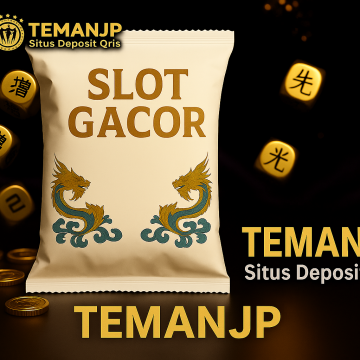Ramen Wonders: Tasting Japan’s Soul in a Bowl
The Rich History of Ramen
Ramen, a dish that has become synonymous with Japanese cuisine, has a complex history that traces back to Chinese noodle dishes. It is believed that ramen arrived in Japan during the late 19th century, introduced by Chinese immigrants who brought with them their culinary traditions. These early iterations of ramen were quite different from what we know today, often consisting of simple wheat noodles served in a broth, flavored sparingly with soy sauce or miso.
As ramen began to adapt to local tastes and preferences, it underwent significant transformations. The post-World War II era marked a pivotal moment in its evolution. With food scarcity prevalent after the war, instant noodles were developed, which greatly contributed to the rise in ramen’s popularity. This innovation not only made ramen accessible to a broader audience but also solidified its standing as a comfort food in Japan.
Over time, regional variations emerged, reflecting the unique culinary influences of different areas of Japan. For instance, Sapporo is known for its rich, miso-based ramen, while Hakata is famous for its tonkotsu (pork bone) broth. Each of these styles showcases the rich cultural tapestry of Japan, where geographical and historical contexts have shaped the development of ramen into various flavors and presentations.
The significance of ramen transcended beyond mere sustenance; it became a symbol of resilience and adaptation in Japanese society. As ramen shops began to proliferate in cities across the nation, they contributed to the local culture and community. Ramen’s influence further extended to the global culinary stage in recent decades, where it has garnered fans from all over the world, establishing itself as an international staple in the realm of gastronomy. This remarkable journey underscores ramen's status not just as a dish, but as a cultural phenomenon representing Japan's rich culinary heritage.
Discovering Regional Varieties
Japan’s ramen scene is an exquisite tapestry of regional styles, each offering a unique interpretation of this beloved noodle dish. One cannot begin to explore the realm of ramen without delving into the famous Tonkotsu ramen from Fukuoka. This style is distinguished by its rich, creamy pork bone broth, which is simmered for hours, sometimes even days, to extract a depth of flavor that is both savory and velvety. The thin, straight noodles often used in Tonkotsu provide the perfect vehicle for the seasoned broth, complemented by toppings like sliced chashu pork, green onions, and a soft-boiled egg. The ramen culture in Fukuoka emphasizes the importance of local ingredients, with some shops also incorporating unique seasonings to offer a distinct flavor profile.
Traveling north to Hokkaido, one encounters a different but equally intriguing variation: Miso ramen. Originating in Sapporo, this style features a hearty broth made from a rich blend of miso paste, which imparts a slightly sweet and rustic flavor. Miso ramen often incorporates toppings that reflect Hokkaido’s agricultural bounty, including sweet corn, butter, and seafood, bringing a taste of the region's fresh produce to the bowl. The thick, curly noodles used in this dish hold the broth exceptionally well, allowing for a satisfying slurp with every bite. This regional ramen is a delicious reflection of Hokkaido's cold climate, offering warmth and comfort to its patrons.
In the bustling metropolis of Tokyo, Shoyu ramen reigns supreme. Characterized by its clear, soy sauce-based broth, Shoyu ramen presents a lighter yet umami-rich experience. The broth is typically made with chicken or pork, achieving a delicate balance that is refreshing and satisfying. This style frequently includes toppings like menma (bamboo shoots), nori (seaweed), and negi (scallions), each contributing to a harmonious and flavorful bowl. The Tokyo variant showcases the city's cultural diversity—by incorporating ingredients from various culinary traditions, it embodies the cosmopolitan nature of the capital.
These regional variations of ramen not only cater to diverse palettes but also reveal the connection between local culture and culinary practices. Geography, climate, and available ingredients play critical roles in shaping each ramen's identity. Understanding these nuances enriches one’s appreciation for this iconic dish and highlights Japan’s culinary landscape as a whole.
The Art of Ramen Crafting
Ramen, a beloved culinary phenomenon, requires meticulous crafting that reflects a harmony of flavors and techniques. The journey begins with the broth, often considered the soul of the dish. Chefs dedicate hours to achieve an intricate balance, favoring a rich and deeply flavorful base made from ingredients such as pork bones, chicken, and a combination of aromatic vegetables. The simmering process can last for hours, extracting umami and nourishment from these components, resulting in a complex yet comforting liquid.
Following the creation of the broth, the next crucial element is the noodles. The dough must be carefully prepared using a combination of wheat flour, salt, water, and kansui, an alkaline mineral water. This unique addition gives ramen its signature chewy texture and yellow hue. The dough is then rolled out and cut into strands, which must be cooked to perfection to achieve the desired bite—al dente, yet tender enough to absorb the broth's flavors.
Once both the broth and noodles are ready, the assembly of the dish takes center stage. Presentation plays a significant role in how ramen is experienced. Ingredients such as sliced chashu pork, green onions, nori, soft-boiled eggs, and menma are expertly arranged atop the noodles and broth, enhancing the visual appeal of the bowl. The interplay of colors and textures invites diners to appreciate the dish not only through taste but also through sight.
Insights shared by ramen chefs reveal their dedication to this intricate process. Many cite the respect for tradition and the influence of regional flavors as guiding principles. While each chef brings their unique twist to the craft, the foundational elements remain essential. They emphasize that the meaningful connection between the dishes they create and the customers they serve is the ultimate reward, encapsulating a passion that extends through generations of ramen lovers.
Ramen Culture and Experience
Ramen transcends mere sustenance; it embodies a rich tapestry of Japanese culture and its social rituals. In Japan, the act of consuming ramen serves as both a culinary experience and a cultural phenomenon, steeped in communal significance. Ramen shops, known as "ramen-ya," are not just places to eat but are vibrant social hubs. Locals and tourists alike flock to these establishments, often forming queues that speak to the popularity and reputation of a particular shop. This collective anticipation fosters a shared experience among diners, linking them through a common appreciation for the noodle dish.
Etiquette plays an essential role in the ramen dining experience. It is customary to savor the noodles straight from the bowl, slurping them loudly to signal enjoyment and enhance flavor. The presentation and consumption of ramen can vary regionally, influencing the overall experience. Diners often engage in conversations about their preferences for broth types, toppings, and noodle textures, which further enhances the community spirit surrounding this beloved dish. Additionally, many shops encourage interactions between patrons and chefs, fostering a unique atmosphere where culinary artistry and customer appreciation converge.
In recent years, the rise of ramen-related events and pop-up shops has further popularized this dish, bringing together chefs from various backgrounds who share their unique interpretations. Such events not only highlight the diversity within ramen culture but also serve to educate others about its historical roots and contemporary significance. Ramen has become a symbolic representation of Japan's identity, reflecting the merging of tradition with innovation. Its impact on modern society transcends the culinary realm, binding people together and creating connections through a shared love for this soul-nourishing bowl of goodness.
Situs Gacor Pulsa Tri 5K Tanpa Potongan Terbaru 2025
Temukan situs gacor deposit pulsa Tri 5K tanpa potongan terbaru di tahun 2025 dan nikmati beragam permainan online dengan aman. Penting untuk memilih situs yang terpercaya agar pengalaman bermain Anda menyenangkan. Dapatkan kesempatan untuk meraih berbagai bonus dan promosi menarik serta pastikan semua transaksi diproses tanpa biaya tambahan. Bergabunglah dan nikmati permainan seru yang ditawarkan oleh situs gacor pulsa di tahun ini.
Situs Deposit Pulsa Tri 5K Tanpa Potongan Paling Gacor
Temukan kemudahan transaksi dengan situs deposit pulsa Tri 5k tanpa potongan. Nikmati proses deposit yang cepat dan efisien tanpa ada potongan, serta optimalkan setiap nilai deposit Anda. Dengan langkah-langkah yang sederhana, Anda bisa melakukan transaksi dengan mudah dan merasa lebih menguntungkan. Bergabunglah sekarang dan gunakan pulsa Anda secepatnya tanpa menunggu lama!
Cara Mudah Main Situs PG Soft Via Pulsa Tri dan Indosat 5000 Tanpa Potongan
Situs PG Soft kini semakin populer di kalangan penggemar permainan online. Dengan berbagai pilihan permainan yang menarik dan bonus yang menggiurkan, semakin banyak orang yang tertarik untuk mencoba keberuntungan mereka. Salah satu cara yang praktis untuk melakukan deposit adalah melalui pulsa, khususnya dengan provider Tri dan Indosat.
Keuntungan Menggunakan Pulsa untuk Deposit
Dengan menggunakan deposit pulsa Tri dan deposit pulsa Indosat, pemain bisa melakukan deposit mulai dari nominal 5000 tanpa potongan. Ini adalah pilihan yang sangat menguntungkan, terutama bagi mereka yang tidak memiliki rekening bank atau kartu kredit. Proses deposit pun sangat cepat dan mudah, sehingga Anda bisa langsung bermain tanpa harus menunggu lama.
Langkah-Langkah Melakukan Deposit
Untuk melakukan deposit di situs PG Soft via pulsa, langkahnya sangat sederhana. Pertama, pastikan Anda memiliki pulsa yang cukup. Kemudian, akses situs PG Soft dan lakukan pendaftaran jika Anda belum memiliki akun. Pilih opsi deposit via pulsa, masukkan nomor telepon, dan jumlah deposit yang diinginkan. Ikuti instruksi yang diberikan dan tunggu konfirmasi. Setelah selesai, saldo Anda akan segera terisi dan siap digunakan untuk bermain.











